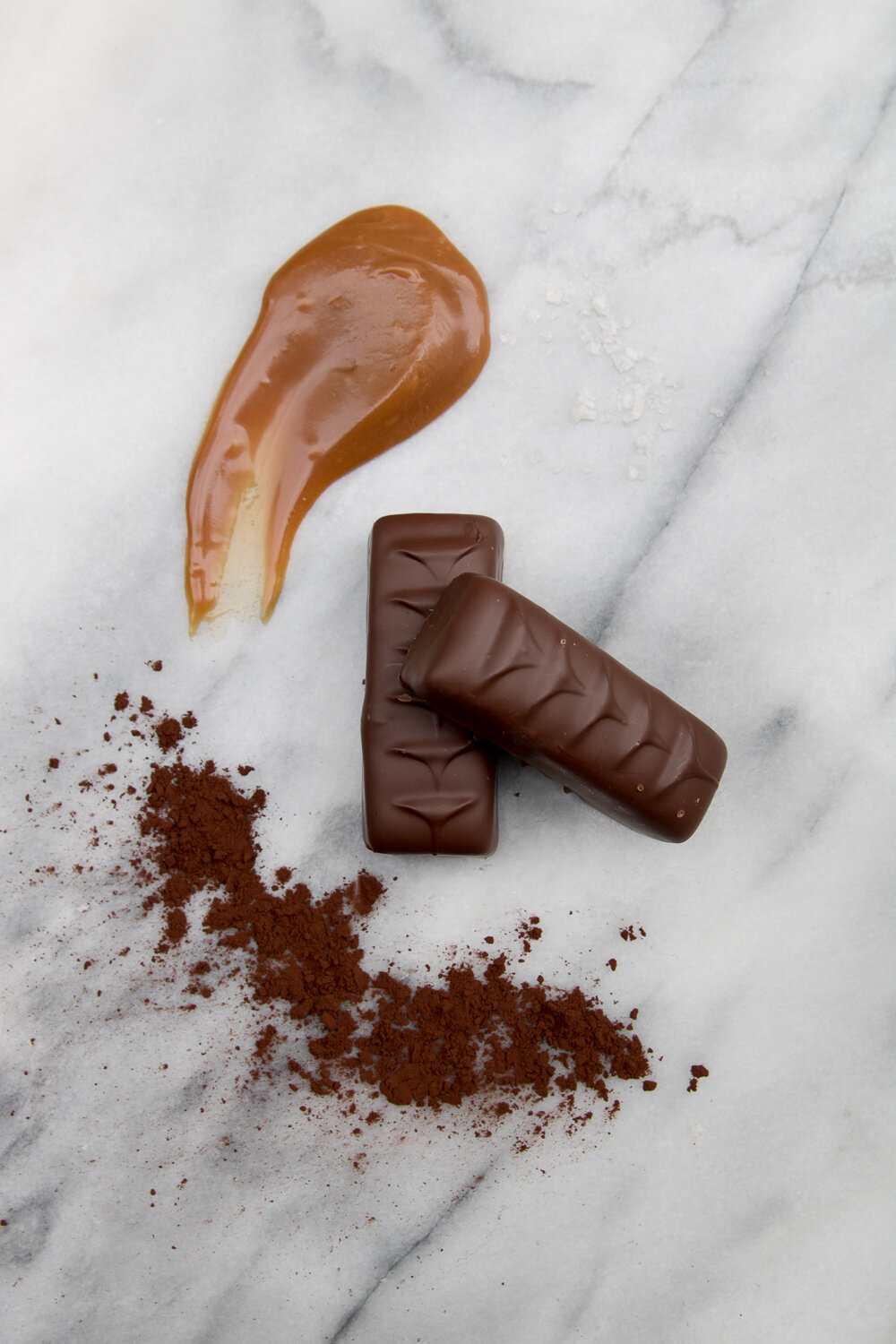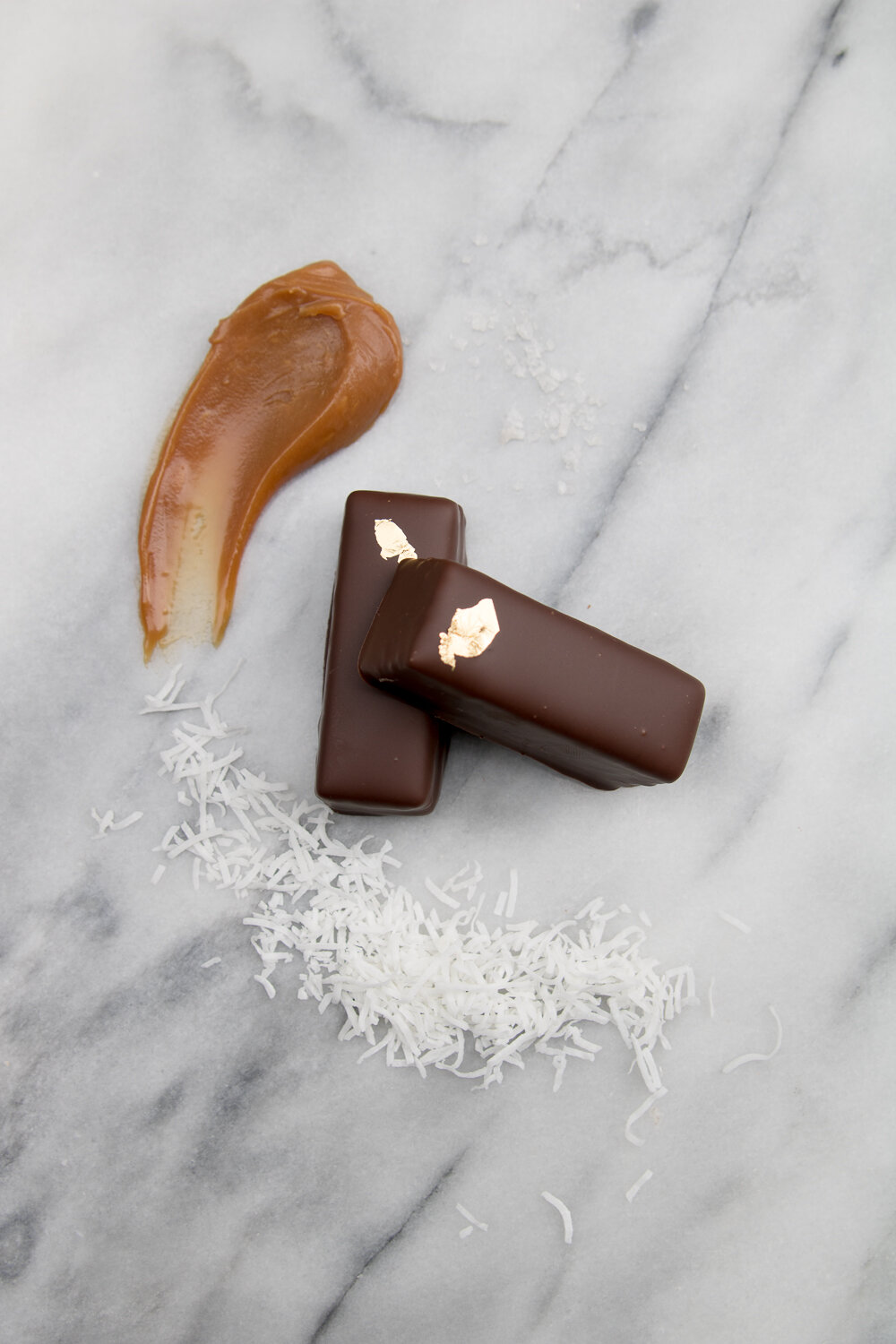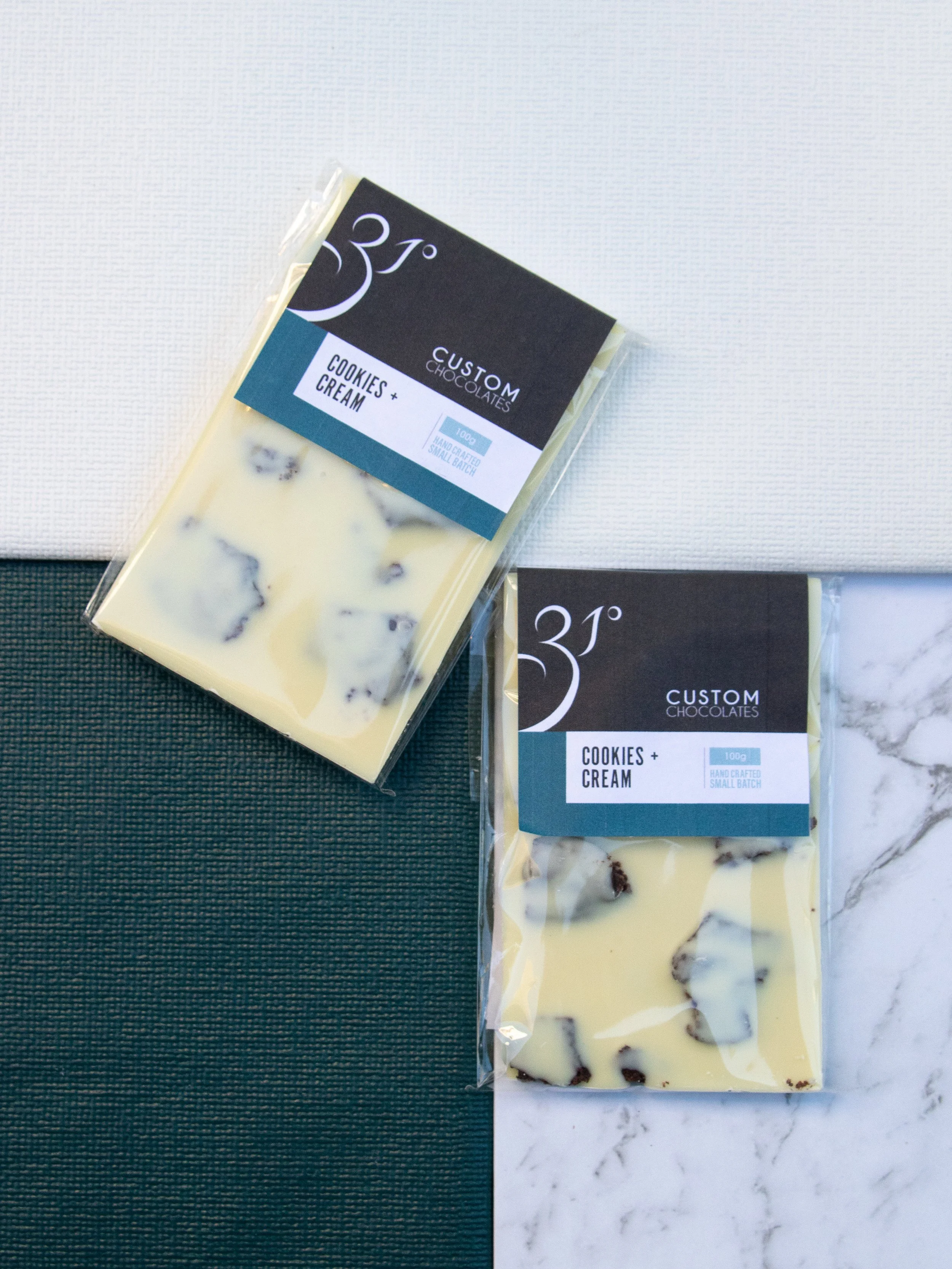The ULTIMATE Chocolate Gift Guide
Handmade and chocolate. The perfect combo for gift giving this Christmas.
Giving at Christmas is about bringing joy. Trying to find the right gift for you friends and family can be tough. We like to think everyone appreciates handmade gifts and chocolate. Lucky our products are both.
GIFTS FOR HER
GIFTS FOR HIM
GIFTS FOR YOUR BOSS
GIFTS FOR PARENTS AND IN-LAWS
GIFTS FOR YOUR BESTIE
SECRET SANTA
ALLERGY-FRIENDLY
I’M STILL NOT SURE…
Chocolate: How to temper without losing your temper
This is a follow on to the last blog post on tempering chocolate- we’ve had the why, and now the how! This is just a brief overview on the different methods; I can always go into more detail if there is a call for it!
As discussed previously, when you temper chocolate you take it through a series of temperatures to allow the crystals in the cocoa butter to set in the ideal formation. It is a three stage process: melting out any crystals present, introducing the crystals that we want, and then bringing and holding the chocolate at the correct temperature. To begin with, the chocolate needs to be melted to 45°, which ensures there are no rogue crystals that will ruin your temper. Then, we need to introduce those wonderful Beta crystals, by either working a portion of the chocolate on a marble slab until it reaches the right temperature, or by adding seed chocolate that is already in temper. By adding in the seed crystals, or adding back in the tabled chocolate, you should reach the ideal working temperature.
Things that you will need!
A clean, dry bowl (plastic or glass is fine- just remember that glass will retain heat longer than plastic)
A spatula
A microwave or double boiler
A thermometer (an instant read is best, but any good digital thermometer will be fine!)
Couverture Chocolate - recommended brands include Lindt, Valrhona, Callebaut, Cacao Barry or Republica del Cacao. Each of these brands have their own temperature curve for the recommended temperatures, so it’s best to look them up before you work with them! It’s easiest to temper chocolate when you have at least 500g! Amounts smaller than this will set up too quickly, and be difficult to work with. If you’re just getting started, dark chocolate is the easiest to work with.
A cool place to work - ideally, your workspace won’t be any warmer than about 20°.
There are two ways that are usually recommended to melt your chocolate, either in the microwave or on the stove using a double boiler. I much prefer using a microwave, on short bursts on a medium power, no more than 30 seconds at a time. By using the microwave, you’re removing any risk of water or steam getting into your chocolate, which will cause it to seize. If you prefer a double boiler, and you accidentally get water into your chocolate, don’t stress! Simply add some hot cream and a flavouring of your choice, and you have ganache!
Seeding
Seeding is the easiest way to master home tempering! The chocolate that you buy -if it has been looked after- is already in temper. Melt two thirds of your chocolate, and then add most of the remaining third, stirring until it is all melted and beautifully glossy. Check that it has reached 31° for dark, 30° for milk or 29° for white, as a general guide. If it is still warmer than this, add in small amounts of chopped chocolate until you reach it! If it is cooler than this, carefully warm the chocolate, being careful not to take it too high, which will bring it out of temper. A hairdryer is actually very useful for this! The temperature of the chocolate that you add in will dictate how long it takes to temper- the cooler it is, the quicker it will be.
Tabling
When people think of tempering chocolate, this is often what comes to mind! A chocolatier spreading chocolate on a marble slab, moving it around until it’s reached just the right consistency. If you’re not practised, this can be quite messy! Small marble slabs can be picked up from most cooking stores for around $20 if you want to give it a go!
Pour out two thirds of your chocolate onto the slab, and spread it out with an offset spatula.Once it is all spread out (being careful not to push it over the edges), scrape it all back into a nice pile in the middle of the slab using a bench scraper. This does two things- firstly, it allows the marble to cool, and secondly, it brings all the chocolate to the same temperature. Repeat this process of spreading until it reaches between 25°-27°, then carefully scrape it all back into your remaining chocolate. After a good stir, you should be right at the working temperature!
Incomplete Melting
This last one is one of the easiest options, but you do have to be very careful! Melt the chocolate carefully, stirring between each burst in the microwave, until between a half and two thirds is melted. If you haven’t warmed it too much, the chocolate that hasn’t yet melted acts at the seed chocolate! If you accidentally warm it too much, simply melt it out to 45 and follow one of the methods above.
Now it’s time to test! Use a strip of baking paper, and dip one side in the chocolate. You don't want too thick a layer, as it will take too long to set; it should only take a few minutes, but remember, the warmer the room, the longer it will take! After after 3 minutes, you should see the edge of the chocolate setting, and after 10 minutes, it should be fully set and have curled slightly. It should make a nice snap sound if you break it when fully set, and it feels smooth and silky when you run your finger over it. If it is streaky, but sets otherwise, it just needs some more stirring, and if it hasn’t set, simply melt out your chocolate again and repeat the process. It’s always better to start again then trying to work with uncooperative chocolate.
Holding the chocolate at the right temperature is tricky, which is why you see chocolatiers use specialised holding tanks! A folded tea towel under your bowl, and a gentle warming with your hair dryer if it starts to cool will help hold it at the right temperature. Check it with your thermometer to make sure it stays right where you want it!
And that’s it! It can seem daunting, but if you’re careful, ensure you have plenty of time, and stay cool, then you’ll be fine!
Chocolate: A Science Lesson
If you're a Masterchef tragic like myself, you may have noticed there's a term that keeps popping up- tempered chocolate. They touch on what it means in the show, but it’s one of those things that could always do with more explanation- it’s very easy to veer into a scientific report, but that goes beyond our needs here! This post explains why chocolate needs to be tempered, and in the next post I’ll explain how you can do it yourself. It’s often easier to understand the ‘how’ when you understand the ‘why’!
Tempering is a process which involves taking the material through a series of temperatures in order to produce the ideal results- it could be glass, metal, eggs (such as when making a carbonara to prevent them scrambling), or chocolate.
When talking about tempering chocolate, it’s the cocoa butter that is being tempered. Couvertures and high quality chocolates contain only cocoa butter- to make chocolate cheaper some or all of the cocoa butter is replaced with hydrogenated vegetables oils. If you’ve ever eaten chocolate that leaves a waxy feeling in your mouth, it’s because the oil melts at a higher temperature than your body heat, leaving behind a thin film of oil. Tempered cocoa butter on the other hands, melts below body temperature, making it feel smooth and creamy. Cocoa butter is polymorphic, which means it can crystallise in different formations, each of which have distinct characteristics. Cocoa butter has six crystal formations, but the one that we’re after when tempering is what’s known as the Form V or beta crystal.
So what does this all actually mean?
The best analogy for understanding the process is to think of a pile of Lego! If you simply heap a pile of differently sized bricks onto a table, they’ll mostly stay put, but they’re unstable, and you can’t do much with them! Push the pile and it will spread out, and some will connect to each other, but some won’t. But, if you use all the same size bricks and join them together, the structure is nice and stable, it takes up less room, and you can start to do things with it! This is the difference between chocolate setting in one of the other 5 crystal formations, but not being in temper- it may feel waxy or greasy with an odd mouthfeel, is unstable and melts at a low temperature and has most likely bloomed (which is cocoa butter that has not yet set working its way to the surface- think of those smaller bricks falling through the gaps of the larger bricks). Compare this to tempered chocolate, which melts at a higher temperature, which is not too far below body temperature, contracts as it sets, is glossy and has a beautiful snap.
In order to temper, you need to coax the crystals into the correct formation. This means melting out all the crystals that may be present, introducing the crystals that we want, and then holding it at the temperature that we can work with it. There are three ways to temper chocolate- tabling, seeding and incomplete melting- keep your eyes peeled for the next post for the run down on these methods!
Questions, comments or you want to know more? Simply leave a comment below!






















